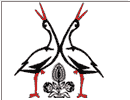|
|
|
|
|
|
|
|
|
|
|
|
|
|
|
|
|
|
|
|
|
|
|
|||||||||||||||||
 |
 |
 |
|
|||||||||||||||
|
|
|
|
|
|
|
|
|
|
|
|||||||||
|
|
 |
 |
|
|||||||||||||||
|
The main root of the Polish population stems from the west Slavonic tribes inhabiting the basin of Vistula and Odra (Polanie, Wiślanie).
The diversity of tribes inhabiting this territory caused new regions with their distinctive cultures and dialects to flourish. The existing and new ethnic cultural units of the Polish territory underwent transformations throughout the history as a consequence of external factors (eg. changes of political borders) and also due to internal development. The part of the population which was left outside the country borders became denationalised but other people like newcomers from Germany, the Netherlands and also Wołosi, who settled on the Polish lands, have preserved to this day some elements of their culture and tongue. All these processes can be traced when looking at the layout of the ethnographic regions of Poland which belong to the five historical districts: I. Wielkopolska II. Śląsk III. Małopolska IV. Mazowsze V. Pomorze According to the above we can distinguish a more precise division of the ethnographic regions: 1. GROUP OF KIELCE AND SANDOMIERZ / GRUPA KIELECKO-SANDOMIERSKA/ 2. KRAKÓW GROUP / GRUPA KARAKOWSKA 3. CENTRAL GROUP (regions of Sieradz, Łęczyce and part of Sandomierz region) / GRUPA CENTRALNA 4. GROUP OF KUJAWY AND WIELKOPOLSKA / GRUPA KUJAWSKO-WIELKOPOLSKA 5. ŚLĄSK 6. MOUNTAIN REGIONS / REJONY GÓRSKIE 7. RZESZÓW REGION / RZESZOWSZCZYZNA 8. RZESZÓW REGION / LUBELSZCZYZNA 9. BIAŁYSTOK REGION / BIAŁOSTOCZCZYZNA 10. MAZOWSZE 11. WARMIA AND MAZURY / WARMIA I MAZURY 12. KASZUBY I POMORZE GDAŃSKIE / KASZUBY AND POMORZE GDAŃSKIE In spite of some controversies, this division can be applied to the present reality quite well. Of course, it is possible to make even more detailed divisions but the aforementioned regions are substantially consistent in the aspects of geography, landscape and most importantly – folklore. |
|
|||||||||||||||||
 |
 |
 |
 |
|
||||||||||||||
 |
 |
 |
|
|||||||||||||||
 |
 |
 |
|
|||||||||||||||
|
|
 |
 |
|
|||||||||||||||
 |
|
|
|
|||||||||||||||
|
|
|
|||||||||||||||||
 |
|
|
|
|||||||||||||||
|
|
|
|
||||||||||||||||
 |
|
|
||||||||||||||||
|
|
|
|||||||||||||||||
|
|
|
|
|
|
||||||||||||||
|
|
|
|
|
|||||||||||||||